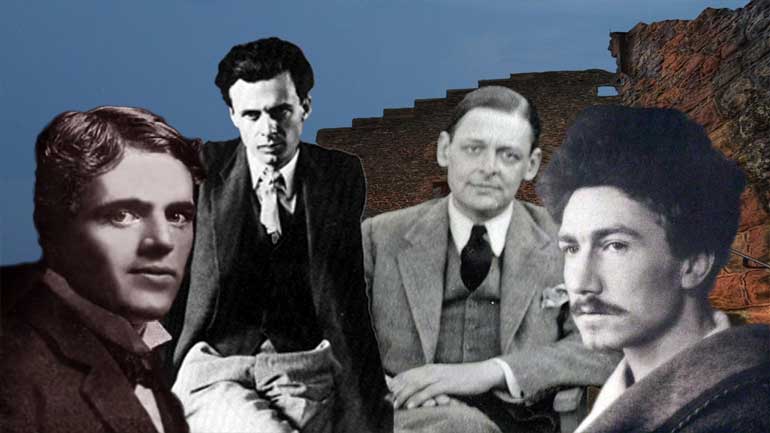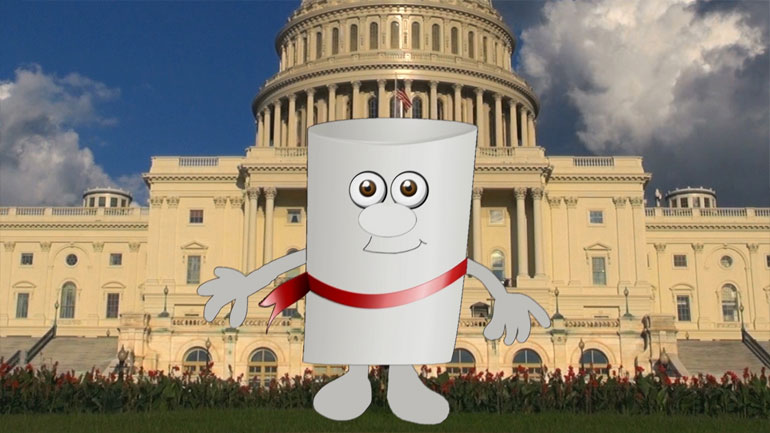ShmoopTube
Where Monty Python meets your 10th grade teacher.
Search Thousands of Shmoop Videos
U.S. History 1877-Present 12.3a: We Object 35 Views
Share It!
Description:
When journalists started documenting the war in Vietnam, the American people discovered just how blissful ignorance could be. Warning: this video contains some disturbing images.
Transcript
- 00:03
The modern age comes with access to virtually limitless [typing in search engine]
- 00:07
information. It's actually kind of overwhelming, and sometimes we might feel [person at computer]
- 00:11
like ignorance truly is bliss. After all, do we really need to know what some
- 00:15
Facebook friend we met once at a party is having for brunch? Do we care what
- 00:20
cute sing their pet did? Well, probably not, though that is pretty cute... Yeah, what the hay, [cat video]
Full Transcript
- 00:25
we like it. Anyway, while the people of the 1960s and 70s didn't have cute dog videos on Facebook, they did
- 00:31
have new access to information, though it might seem like peanuts to us today. They [person uses phone]
- 00:36
had live news coverage, radio coverage, and journalists on the ground reporting back [radio dial turns]
- 00:41
on the war in Vietnam. What's more, they had the experience of soldiers fed [Vietnam TV coverage]
- 00:46
up with the futility of this war. Some called Vietnam the first living room war.
- 00:51
Do not be confused with what happens when dysfunctional families get together
- 00:55
for Thanksgiving. It means that the war was piped in via television to every [family meets for Thanksgiving]
- 00:59
living room in America. Photographers and cameramen delivered horrifying images,
- 01:04
including the charred body of a Vietnamese Buddhist monk, the [Vietnam war photos]
- 01:08
assassination of a Viet Cong sympathizer, and the bloody, deformed
- 01:12
corpses of Vietnamese villagers. Horror movies were less scary than this.
- 01:16
While American reporters traveling alongside U.S. troops broadcasted the gritty reality of [reporter travels with troops]
- 01:22
life and death on the Vietnam War front, the national and local printed press was
- 01:27
also pumping out the grisly details of the war. National publications like the [van delivers paper]
- 01:31
New York Times and Washington Post published detailed reports from the war [newspaper]
- 01:35
front. One dispatch from Jack Langguth in june 1965 included [war photos]
- 01:40
descriptions of the carnage left after U.S. saturation bombing and napalm strikes
- 01:45
in Quang Ngai. There were images of hundreds dead many more severely wounded, [Quang Ngai photos]
- 01:50
burned, mutilated--most of them women. Some military personnel returning from the war
- 01:55
front were also totally cynical about of the war itself. In an essay entitled, [soldier returns home with sign]
- 02:00
"The Whole Thing was a Lie," Donald Duncan, a top-ranking sergeant who served in
- 02:05
Vietnam for one and a half years, argued for a full U.S. withdrawal. Duncan argued [Duncan pictured]
- 02:11
that it should be up to the Vietnamese whether
- 02:13
or not they wanted to be communists. He said that allying ourselves with bad [Duncan argues against war]
- 02:17
guys and using horrific tactics to try and defeat the communists was making bad
- 02:21
guys out of us. Bad guys fighting bad guys, what was this? Suicide squad? All [movie villains pictured]
- 02:26
right, well local newspapers also relayed information about the war, sometimes
- 02:30
through the publication of soldiers' letters home. Well, these often told [person reads paper]
- 02:34
gut-wrenching stories about terrible battles with the Viet Cong, senseless
- 02:38
killing, and plenty of confusion and frustration about military operations [letters from soldiers shown]
- 02:43
and U.S. goals. Well, year after year, Americans bore witness through mass media [bombing footage]
- 02:47
to the bombing, the firestorms, the shooting, the killing of Vietnamese, and
- 02:51
the deaths of U.S. soldiers. Yet, year after year, American leaders, without explaining
- 02:57
the terms of war, called the nation to accept it as necessary. That's how [Nixon shows chalkboard]
- 03:02
america's foray into mass media whipped the country into a whirlwind of
- 03:06
discontent. The truth is that more information isn't always that comforting. [media outlets fly by]
- 03:10
Kind of like when that Facebook friend we met once at a party posts about the [person dreams]
- 03:13
things he dreams about at night. All we can say is, "Ew."
Up Next
Ever heard of a "living document"? They eat and breathe just like the rest of us! They even walk around on their own two legs. Okay, fine—maybe t...
Related Videos
If the Puritans had gotten their way, religion would play a much larger role in lawmaking these days. Want to know more? Watch the video for all th...
What happened between the creation of the Articles of Confederation and the ratification of the current U.S. Constitution? This video analyzes the...
The Modernists thought the world had a lot of problems, and they were intent on fixing them—or at least talking about fixing them. Unfortunately,...
This video explains Federalism and the quest for a fair balance between state and national power. It covers the progression and compromises of Fede...




